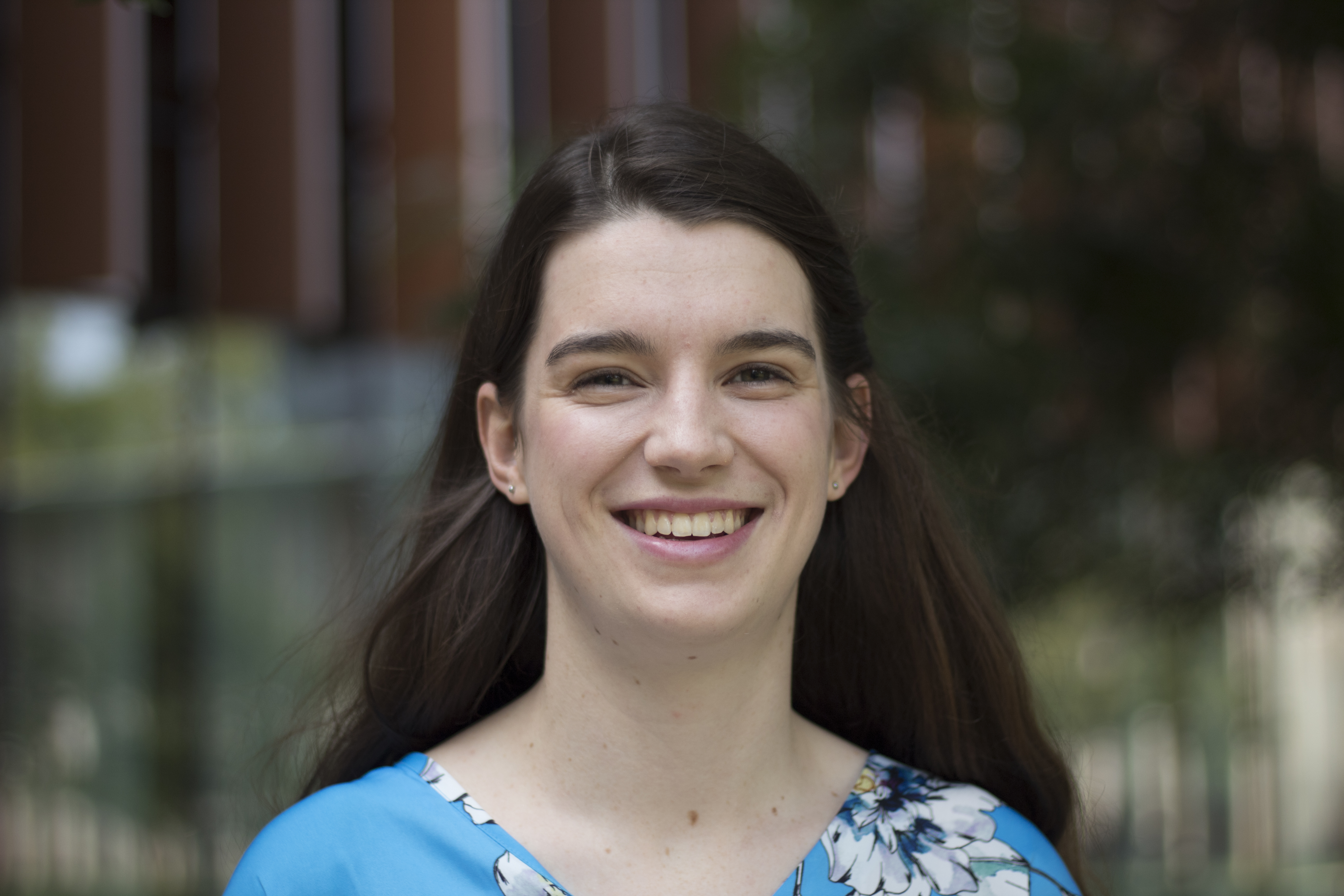10 out of 200: Of cats and donuts – Adele Jackson uses topology to tackle classification problems
BLOG: Heidelberg Laureate Forum

Meet Adele Jackson, mathematician and one of this year’s 10 out of 200 young researchers participating in the 7th Heidelberg Laureate Forum from September 22nd – 27th, 2019.

What are your name and nationality?
My name is Adele Jackson and I am from Australia.
Where did you study and where are you currently based?
I completed my undergraduate degree at the Australian National University, Canberra, Australia. I am in the process of moving to Oxford.
What is your current position?
I am about to start a Ph.D. in mathematics at the University of Oxford, in the topology research group.
What is the focus of your research? What is your research project?
I work on low-dimensional topology. Topological is the study of spaces and shapes where we consider two spaces to be the same if we can turn one into the other by bending or stretching them. For example, I think of a sphere and a cube as the same, but a sphere and a doughnut as different. I think about three-manifolds, which are spaces that locally look like three-dimensional space. One subfield of topology that I am particularly interested in is finding algorithms to solve topological problems. I am also working on a paper on a presentation of the mapping class group.
I am also very interested in topological data analysis. I just finished working at CSIRO, Australia’s national research agency, using my topological skills to understand some of the latest techniques in machine learning. Looking at the shape of data can give us useful insights into it.
Why do you want to become a mathematician?
Understanding how mathematical systems and objects work is endlessly interesting and rewarding. I was a student in the Australian informatics olympiad training program in high school. I quickly realised that I enjoyed it for the mathematical ideas behind the algorithms rather than for the programming itself. I love how thinking about these abstract logical systems can give surprising insights and applications.
What are some of the fundamental challenges you have faced in your academic career?
Balancing mathematics and my life outside it is always a challenge, but I am improving at it.
What do you feel are the greatest pressures facing scientists today?
It seems to me that job and funding uncertainty is a substantial impediment to researchers. Going into this field, if you aim to work in a postdoctoral position after your Ph.D., you will likely move continents every couple of years and have little to no control over where you live for a substantial period. This is both an exciting opportunity to see what living in other countries is like, and quite challenging.
What are you doing besides research?
I play ultimate frisbee and love getting outdoors. I am very excited to do lots of hiking in Europe. Right before the HLF, I will be doing a walk in northern Sweden: fingers crossed I see reindeer!
How did you hear about the HLF and why did you apply?
I read about it on the Math With Bad Drawings blog in 2016, when I was a couple of years into my undergraduate degree. It sounded like a fantastic opportunity.
What do you expect from this meeting?
I look forward to meeting like-minded people: it will be wonderful to spend a week meeting both the laureates and the young researchers. I expect to meet people from many different fields, who all love to learn and understand the world around them.
Which laureates present at the forum would you really like to talk to and what do you want to ask them?
I would like to meet Robert Tarjan. I was substantially influenced towards pure mathematics by my time in the Australian informatics olympiad training program, which I now tutor for. One of the first papers I remember reading was his analysis of the computational complexity of union-find.
Who were your most important mentors and what lessons did they pass on to you?
The mathematics faculty at ANU has been incredibly supportive. Attending seminars over my degree has exposed me to many areas of mathematics. In particular, Joan Licata, who supervised my honours thesis, gave me the opportunity to do proper research for the first time, with all its rewards and frustrations.
What is topological data analysis and what can we use it for in everyday life?
Topological data analysis is what it says on the tin: applications of topological to analysing data. I am particularly interested in applications to machine learning.
For example, if we are trying to classify a dataset into two classes, we could look at topological properties of the decision boundary that splits the classes in the dataset. If the decision boundary is very complicated, it is likely we are picking up artefacts in our particular dataset rather than trends that we can generalise to other contexts. We can use this to optimise the classification to reduce this overfitting. Classification problems are ubiquitous in everyday life. We might want to decide whether an image has a cat in it, or whether a scan of a rock is of limestone or sandstone. Topological data analysis can help us develop more robust techniques for solving these problems.


In Topological Analysis we study the shape of data rigorously. This succeeds even when the data is messy/noisy and results often in a reduction of dimensionality.
Hey, thats amazing – amazing because what seems messy and noisy even to humans is clear like the blue sky if you are using the “right” mathematical tool.